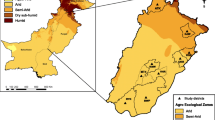Abstract
This study aimed to evaluate season, breed, number of lactations and milk production as risk factors relating to Rhipicephalus microplus infestation in dairy cows during the peripartum. Eighty-four animals were randomly selected through proportional stratified sampling. All engorged and partially engorged female R. microplus specimens measuring 4.5–8.0 mm were counted during the 5 weeks before calving, calving week and 5 weeks after calving. The peripartum had a significant effect [calving (p < 0.05; prevalence ratio (PR)= 3.12) and post calving (p < 0.05; PR = 2.02)] on R. microplus infestation. Although the average tick count was higher during the rainy season than during the dry season, there was no significant difference (p = 0.055; PR = 0.63). The average R. microplus count was significantly higher (p < 0.05; PR = 2.10) in Bos taurus animals, followed by F1 (p < 0.05; PR = 1.64) and Girolando (p < 0.05; PR = 1.39). The average R. microplus count was significantly higher (p < 0.05; PR = 0.97) in first-lactation animals, followed by those at the second, third and, fourth or subsequent lactation. Milk production showed a negative correlation with R. microplus count, such that high-production animals were significantly (p = 0.003; PR = 2.04) more vulnerable to infestation than were low-production animals. First-lactation and high-production B. taurus animals had greatest vulnerability to R. microplus infestation over the peripartum period, and constituted the at-risk group in the dairy herd.

Similar content being viewed by others
References
Andrade ABF, Silva RG, Costa AJ, Rocha UF, Landim VJC (1998). Genetic and environmental aspects of the resistance of Zebu cattle to the tick Boophilus microplus. In: Proceedings of the 6th World congress on genetics applied to livestock production, 1998, Armidale: NSW, Austrália. Armidale, 27, 339–342
Anon (2002) Australian code of practice for the care and use of animals for scientific purposes. Australian Government Publishing Service, Canberra, ACT, Australia
Bertrand JA, Berger PJ, Freeman AE, Kelley DH (1985) Profitability in daughters of high versus average Holstein sires selected for milk yield of daughters. J Dairy Sci 68:2287–2294
Chorfi Y, Lanevschi-Pietersma A, Girard V, Tremblay A (2004) Evaluation of variation in serum globulin concentrations in dairy cattle. Vet Clin Pathol 33:122–127
Detilleux JC, Kehrli ME Jr, Stabel JR, Freemad AE, Kelley DH (1995) Study of immunological dysfunction in periparturient Holstein cattle selected for high and average milk production. Vet Immunol Immunopathol 44:251–267
Donovan GA, Badinga L, Collier RJ, Wilcox CS, Braun RK (1986) Factors influencing passive transfer in dairy calves. J Dairy Sci 69:754–759
Doube BM, Wharton RH (1980) The effect of locality, breed and previous tick experience on seasonal change in the resistance of cattle to Boophilus microplus (Ixodoidea: Ixodidae). Experientia 36:1178–1179
Hewetson RW (1971) Resistance by cattle to the cattle tick Boophilus microplus. III. The development of resistance to experimental infestations by purebred Sahiwal and Australian Illawarra shorthorn cattle. Aust J Agric Res 22:331–342
Machado Neto R, D’arce RD (1979) Proteínas séricas nos períodos pré e pós-parto de vacas da raça Nelore. J Agric 53:13–19
Mallard BA, Dekkers JC, Ireland MJ, Leslie KE, Sharif S, Vankampen CL, Wagter L, Wilkie BN (1998) Alteration in Immune responsiveness peripartum period period and its ramification on dairy cow and calf health. J Dairy Sci 81:585–595
Martinez ML, Machado MA, Nascimento CS, Silva MVGB, Teodoro RL, Furlong J, Prata MCA, Campos AL, Guimarães MFM, Azevedo ALS, Pires MFA, Verneque RS (2006) Association of BoLA-DRB3.2 alleles with tick (Boophilus microplus) resistance in cattle. Genet Mol Biol 5:513–524
Oliveira GP, Alencar MM, Freitas AR (1989) Resistência de bovinos ao carrapato Boophilus microplus. II. Infestação natural. Pesq Agropec Bras 24:127–1267
Piper EK, Jonsson NN, Gondro C, Lew-Tabor AE, Moolhuijzen P, Vance ME, Jackson LA (2009) Immunological profiles of Bos taurus and Bos indicus cattle infested with the cattle tick, Rhipicephalus (Boophilus) microplus. Clin Vaccine Immunol 16:1074–1086
Roche JF, Mackey D, Diskin MD (2000) Reproductive management of postpartum cows. Anim Reprod Sci 2:703–712
Silva JB, Rangel CP, Baêta BA., Fonseca AH ( 2013) Influence of the physiological state on infestation by Rhipicephalus microplus in dairy cows. Ticks Tick-Borne Dis 4:52–56
Tatchell R, Moorhouse D (1968) The feeding processes of the cattle tick Boophilus microplus (Canestrini). Parasitology 58:441–459
Utech KB, Wharton RH, Kerr JD (1978) Resistance to Boophilus microplus in different breeds of cattle. Aust J Agric Res 29:885–895
Veríssimo CJ, Silva RG, Oliveira AAD, Ribeiro WR, Rocha UF (1997) Resistência e susceptibilidade de bovinos leiteiros mestiços ao carrapato Boophilus microplus. Bol Ind Anim 54:1–10
Wagland BM (1975) Host resistance to cattle tick (Boophilus microplus) in Brahman (Bos indicus) cattle. I Responses of previously unexposed cattle to four infestations with 20,000 larvae. Aust J Agric Res 26:1073–1080
Wharton RH, Utech KBW (1970) The relation between engorgement and dropping of Boophilus microplus (Canestrini) (Ixodidae) to the assessment of tick numbers on cattle. J Aust Ent Soc 9:171–182
Author information
Authors and Affiliations
Corresponding author
Rights and permissions
About this article
Cite this article
da Silva, J.B., Rangel, C.P., de Azevedo Baêta, B. et al. Analysis of the risk factors relating to cows’ resistance to Rhipicephalus microplus ticks during the peripartum. Exp Appl Acarol 63, 551–557 (2014). https://doi.org/10.1007/s10493-014-9793-z
Received:
Accepted:
Published:
Issue Date:
DOI: https://doi.org/10.1007/s10493-014-9793-z




